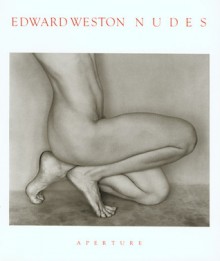Of all the unnoticed works of art in nature revealed by Weston's camera, it was the human form that most persistently challenged this great photographer throughout his working life. Erotic, sculptural, and poetic, his nude photographs of lovers, friends, and of his son Neil combine the essentials...
show more
Of all the unnoticed works of art in nature revealed by Weston's camera, it was the human form that most persistently challenged this great photographer throughout his working life. Erotic, sculptural, and poetic, his nude photographs of lovers, friends, and of his son Neil combine the essentials of physical passion with a desire to go beyond the transitory to a discovery of eternal forms. In his search for the ideal, Weston concentrated on the fundamental physical aspects of his subjects, empowering his prints with an intrinsic grace and elegance. There is a desire to draw near, and a distant, unknowable sense of sculpture; a reflection of universal rhythms, revealing the "vital essence of things." In his "Daybook" dated December 9, 1934, Weston wrote: "The first nudes of C. were amongst the finest I had done, perhaps the finest." "C." was Charis Wilson, then a girl of 20. For the next ten years, she lived with and posed for Weston, and developed such an instinctive understanding of his style that as they drove through the West on photography expeditions, Weston would often close his eyes and doze while Charis scanned the horizon for "Edward Weston" subject matter. Charis proved so adept at putting Weston's thoughts into words that shortly after they met, he turned over to her all his writing chores. In the present volume, Charis draws upon her experiences as both model and partner to offer a uniquely informed remembrance not only of Weston's nudes--which comprise the largest single category of his output--but also of the man himself. Of her first encounter with Weston's photographs of the nude, Charis writes: "Nothing could have been farther from "Art Poses" than Edward'snudes, and I was fascinated by their strong individuality as body portraits. At first I had the same trouble with the peppers, dead birds, and eroded planks--I couldn't get past the simple amazement at how real they were. Then I began to see the rhythmic patterns, the intensely perceived sculptural forms, the subtle modulations of tone, of which these small, perfect images were composed. And I began to appreciate the originality of the viewpoint that had selected just these transitory moments and made them fast against the current of time." Edward Weston . . . the most highly revered of photographers . . . his nude photographs emerge in fugues of craft and insight neither nude nor naked but filled with life.
show less

